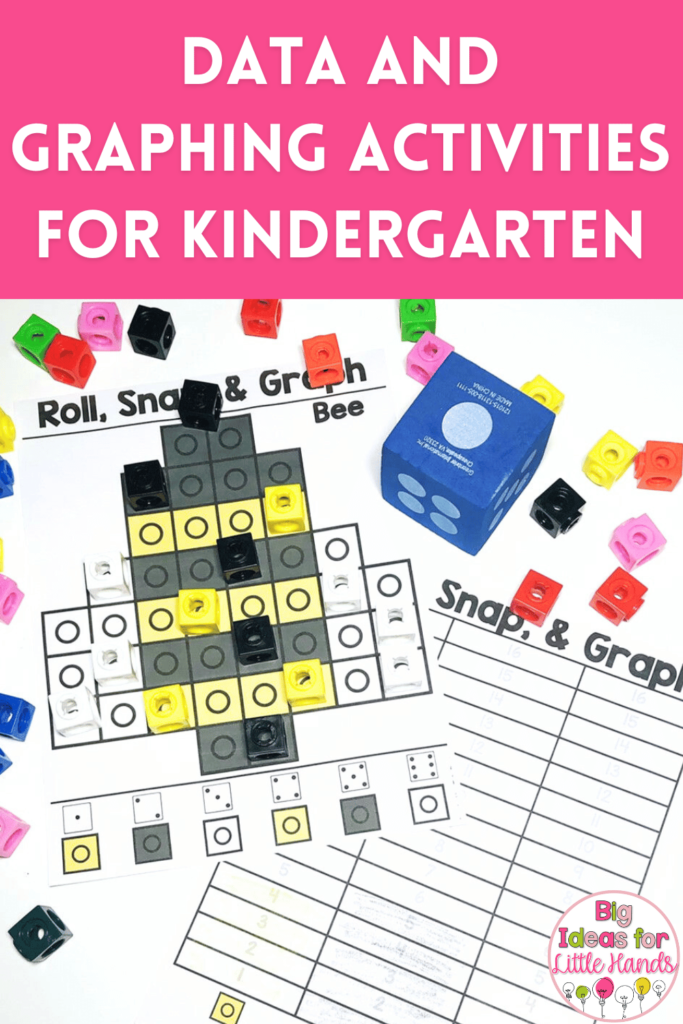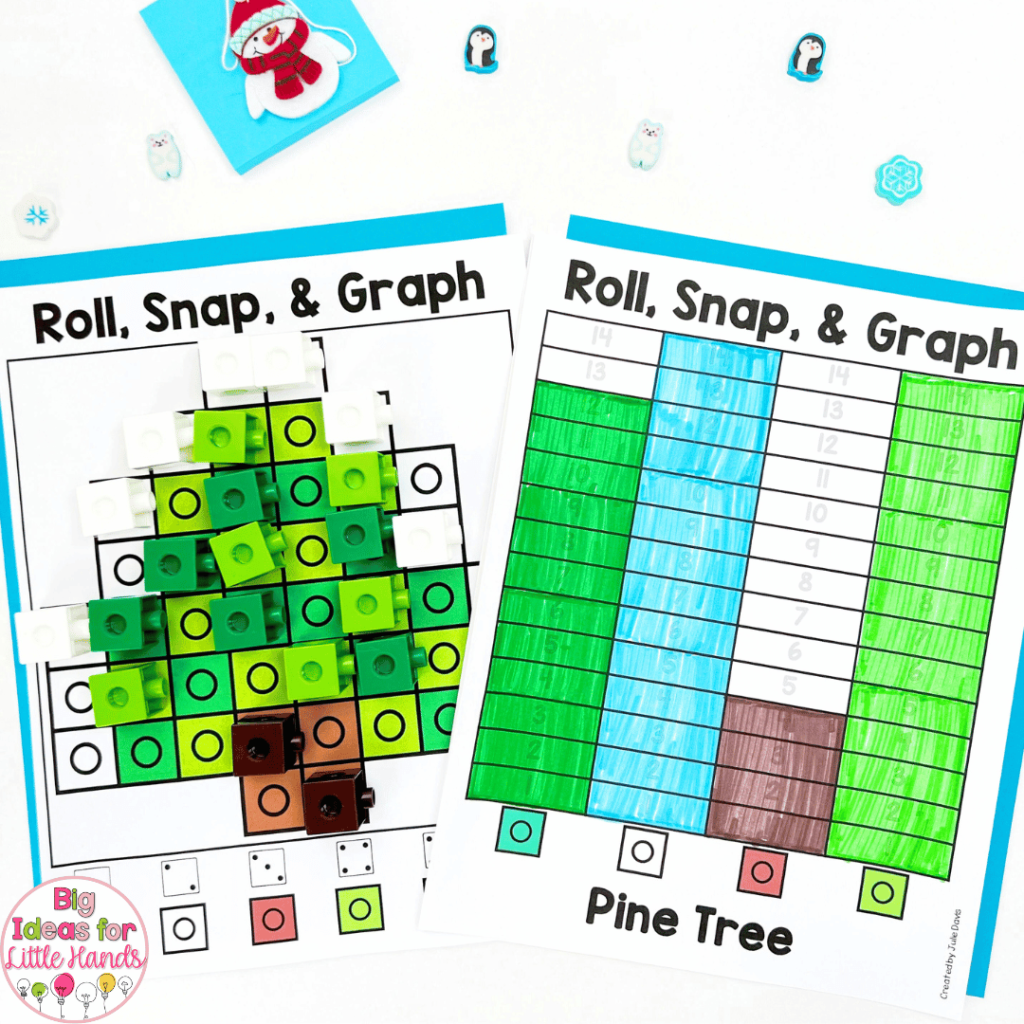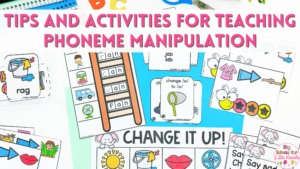Teaching data and statistics in kindergarten is one of my favorite things! As students learn to organize, represent, and interpret data; their eyes light up with interest! If you’re looking for a fun and simple way to incorporate these essential math concepts into your teaching routine, you’re in the right place! Let’s take a closer look at how I use monthly graphing activities to teach data and statistics.

Teaching Data and Statistics in Kindergarten
So what exactly does this topic look like in kindergarten? According to the Common Core Standards, kindergarten students are expected to learn how to:
“Organize, represent, and interpret data with up to three categories; ask and answer questions about the total number of data points, how many in each category, and how many more or less are in one category than in another.” CCSS1.MD.C.4
This most basic level of data and statistics allows students to understand groups of numbers, organize them into categories, and compare the groups to each other. Not only is this an interesting topic for young students, but it’s relevant to real life too! Children will often interpret data all on their own. Just listen in as they play in the classroom, count rocks on the playground, or compare snacks at lunch. They will often check and see who has more or less, what color specific items are, and many other questions that fall right in line with data analysis.
Because of this frequent, natural occurrence, I often use real-life examples to guide my teaching as we dive into graphing activities. This helps me get more buy-in from students and helps them to see why this practice is helpful in real life!
Using Fun Graphing Activities
As I mentioned above, I always aim to make our graphing activities fun and interesting to students, especially when we do our initial introduction on this topic.

Before I have the kiddos work on any hands-on practice of their own, we do a whole-group introduction. In this time block, I chat with the students about the definition of “data” and how we can use graphs to organize it. We cover information on:
- what data is
- how we can organize it by type
- how we can count the number in each group
- how a graph is helpful in this process
If you’ve already taught students how to organize data with tally marks, this will be a simple and easy connection. If not, you might need to spend some additional time on this portion of your lesson. Make sure to have visual examples, ask questions, and allow students an opportunity to see graphing in action.
My Favorite Graphing Activities to Introduce Data
There are so many ways to do this introduction with students, but I have a favorite method that always seems to turn those lightbulbs on. To kick things off, I like to get a large piece of chart paper and draw a simple bar graph ahead of time. You can also do this quickly and easily on a whiteboard, but I personally like to have chart paper that students can look back at after our introduction.
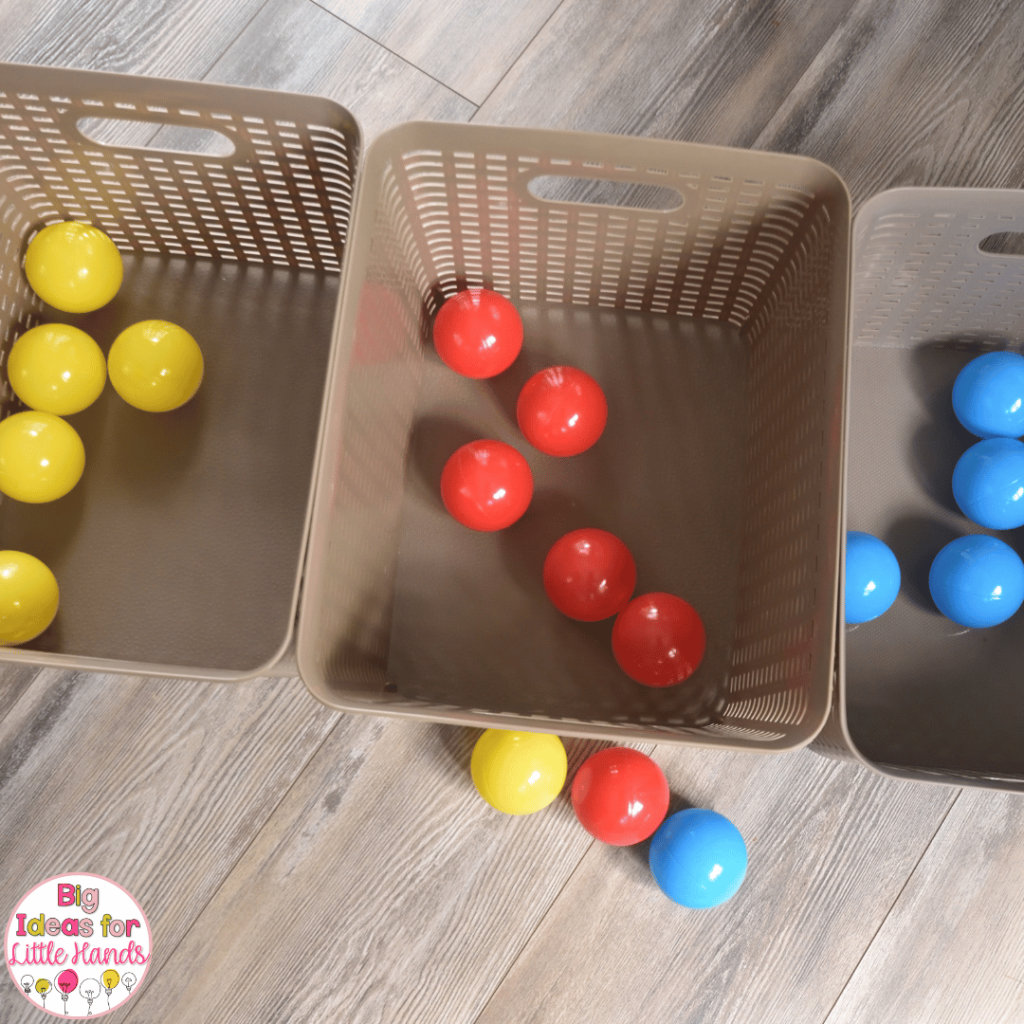
Once you’ve prepared your graph, you’ll need to choose what to use for your data. For our initial introduction, I like to use three colors of small balls that I bring in from home. I make sure that there are enough balls for each student to have one. I start by having the students sit in a circle on the carpet and placing all of the balls in the middle.
During our introduction, I pull out three plastic bins that we will use for sorting. Then I ask each student to get 1 ball from the center. Together, we begin to sort the balls by color. One student at a time, they bring their ball and add it to the correct bucket. As we do this, I am talking about the process or asking them why they chose the bucket they did.
To help keep it simple, we sort one item at a time into the correct bucket and fill in a box on the bar graph as we go. I fill in the graph as the students put the balls in the bucket. This helps students make the connection that one item represents a single square on the bar graph. We continue this process until all of the balls are sorted and shown on the graph.
Next, we move on to data interpretation. We count how many of each color and determine which one has the least, and which has the most. I write all of these numbers down as we go. I like to repeat this process a few more times with some real-life examples. Some good options are school supplies (crayons, markers, and gluesticks) or student hair colors. The more examples you do with your class, the more likely it is that they will start to see how helpful data collection and analysis can be!
Graphing Activities for Student Practice
After our whole group instruction, I like to allow students to practice this on their own. When we first introduce graphing activities, I always use a fun snack. Food is an excellent way to get student buy-in and it always catches their interest. In my room, colored cereal like Fruit Loops is one of my favorite things to use. You can also use mini erasers, small manipulatives, or really anything you have on hand!
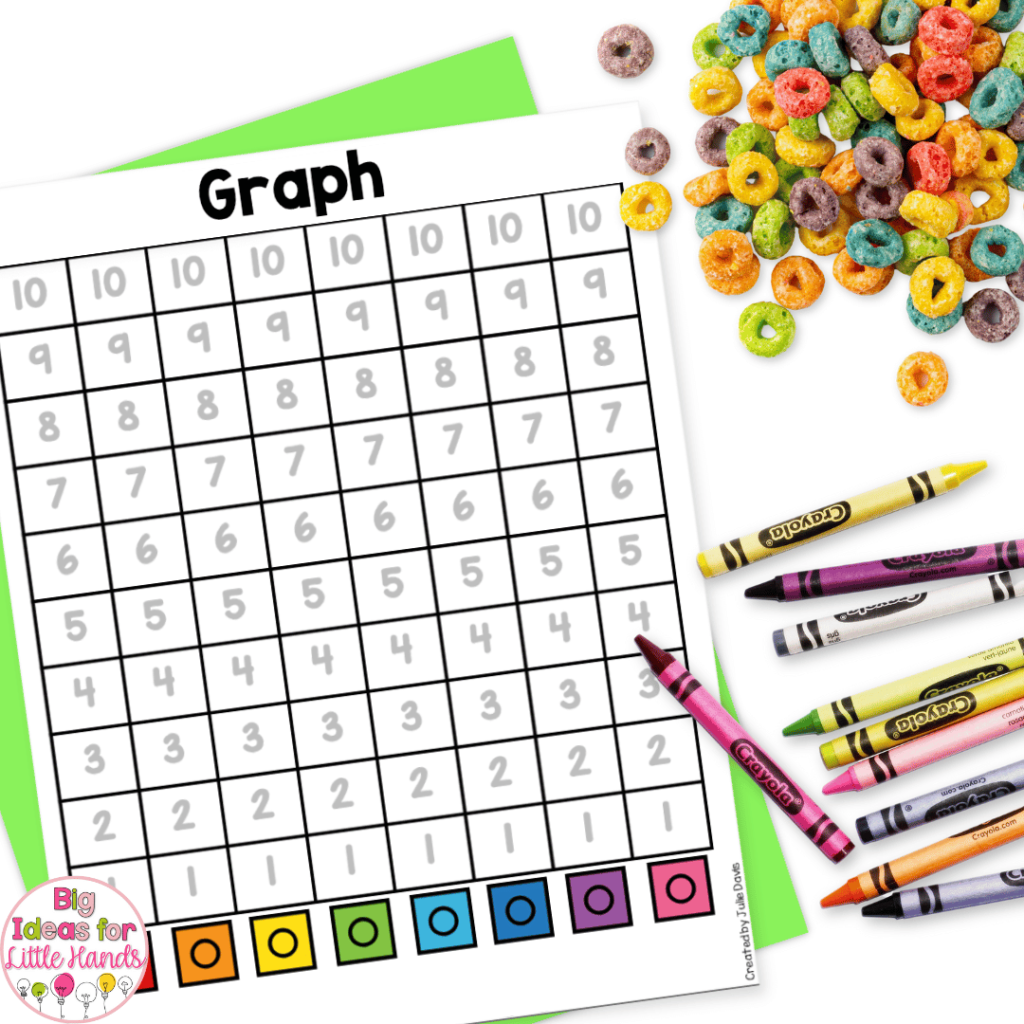
To get started, give each child a simple piece of graph paper and a baggie or bucket of items to graph. I have all of the students work on this at once at their desks and move around the room to observe and help as they work. If you’re using Fruit Loops like we do, each kiddo will dump out their bag of cereal and begin sorting and graphing just like you did in your example. If you’re worried about sugar or crumbs getting on the desks, you can also give each kiddo a paper plate. Although, I’ve found that simply wiping them down with a wet cloth afterward works just fine.
As students work, encourage them to graph one item at a time so that they don’t lose count or get overwhelmed. This also helps reinforce that one piece of cereal represents one square on their graph. After they are finished, have them interpret their graphs and compare them with a partner. Last, they get to enjoy the cereal, which is always everyone’s favorite part! I love this activity because it’s a really fun way to introduce this topic. Making a lasting, positive first impression with a new topic is always a win in my book!
Monthly Graphing Activities for Kindergarten
So after your initial introduction, how do you continue to allow students opportunities to practice graphing activities? As much as students would enjoy it, it’s certainly not realistic to eat sugary cereal all year long! Instead, I use my all-time favorite classroom manipulative to make graphing activities easy to facilitate all year long… Snap cubes to the rescue!

Snap cubes are my secret weapon for teaching data and statistics in a fun way. We use themed, monthly snap cube mats along with graph paper recording sheets to practice working with data. To use, students will receive a mat along with access to a bucket of colored snap cubes. They will roll a die, find the colored cube for the number they rolled, and place it on the mat. Then, they graph it accordingly on their paper. They repeat this process until the mat is full. Last, they can interpret the data and see which color has the least and most.
The best part of this activity though, is that these mats are themed for different seasons and holidays. After they have completed the activity, a fun picture will appear! I have mats for the whole year so that we’ll always have a simple and easy graphing activity that ties into the current season.
Using the Monthly Graphing Activities
In my room, we use these activities in so many different ways! Once your students are familiar with the process of graphing snap cubes, it’s really simple to use these mats throughout the day. Some of the ways we use them include:
- morning tubs
- center time
- fast finishers
- small groups
- partner games
- time-fillers
- sub tub activities
I like to laminate the mats and keep them in a basket along with a bucket of snap cubes. That way, if we ever have a few extra minutes to spare, I can pull them out easily. They also come in handy for our weekly center rotation. I simply swap out the mats each week with a new theme and students have a graphing activity that feels fresh and new! Each one of these resources includes 10 different mats, so you’ll have plenty of options to use with your group.
Graphing Activities for the Whole Year
I don’t know about you, but I am all about simplifying my lesson planning. Once I’ve found a “winner”, I tend to stick with it all year long! These graphing activities are one of those all-star resources that I often find myself returning to. Not only are they fun for students, but they are low-prep, versatile, and simple to use all year long no matter what we’re studying in our other subject areas. The fun seasonal and holiday themes make it easy to weave them into our lessons and everyone enjoys them. Inside the Roll, Snap, and Graph Bundle you’ll find 16 different resources for topics such as:
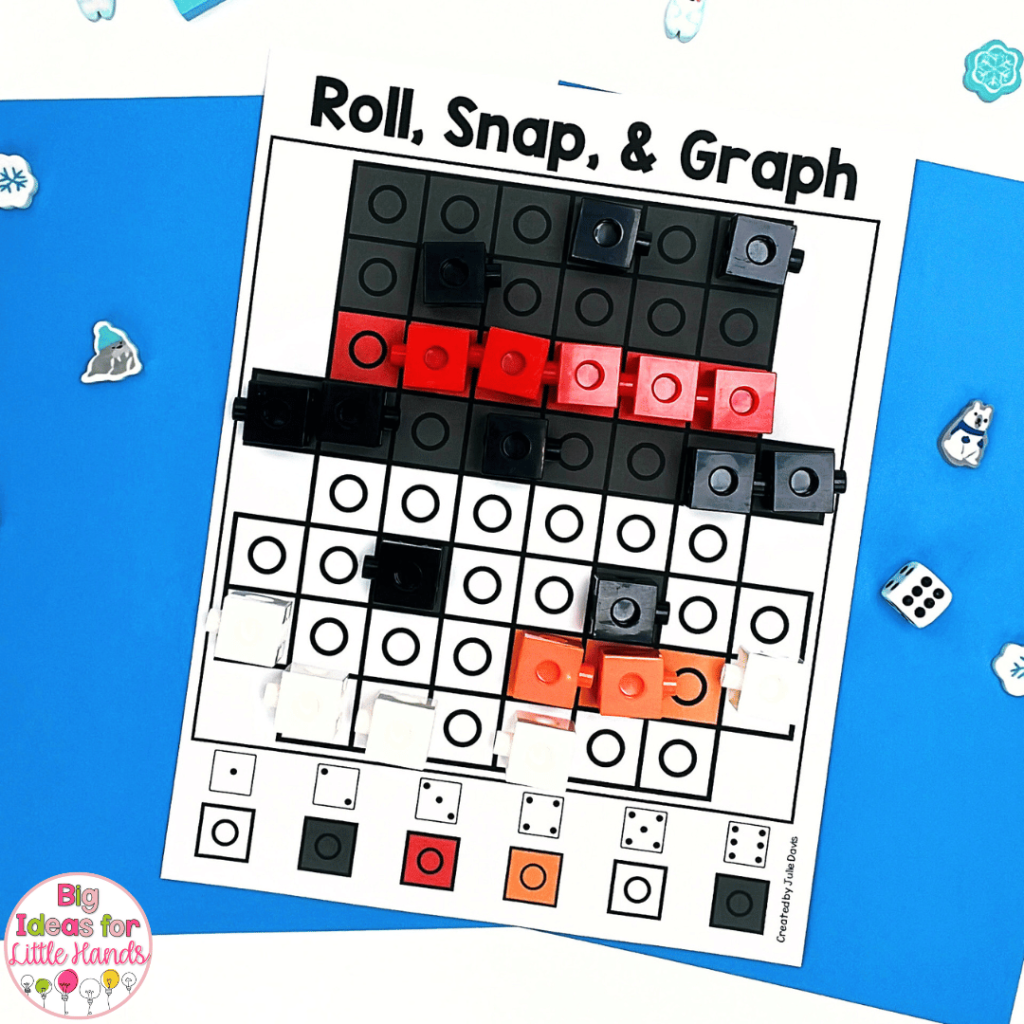
- Back to School
- Fall
- Christmas
- Winter
- Valentine’s Day
- Spring
- End of the Year and more!
These low-prep activities make it super simple to weave data and statistics practice into our teaching routine in a fun way.
Whether you use them for weekly centers, morning work, or your fast finishers, I know you’ll love having a fun and simple way to practice graphing! Check out the bundle if you’d like to take a closer look and simplify teaching data and graphing in your room!
Looking for More?
Check out these posts for more fun ways to teach math in the primary classroom!
- Back to School Counting Games for Kindergarten
- Fun Ways to Target Critical Thinking Skills in the Primary Grades
Save This Post
Pin this post on Pinterest to keep these graphing activities handy!
